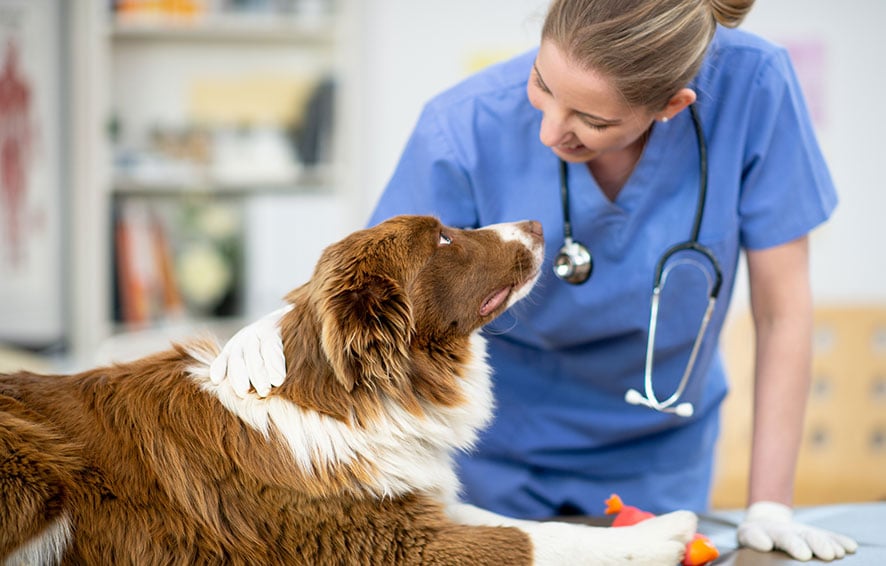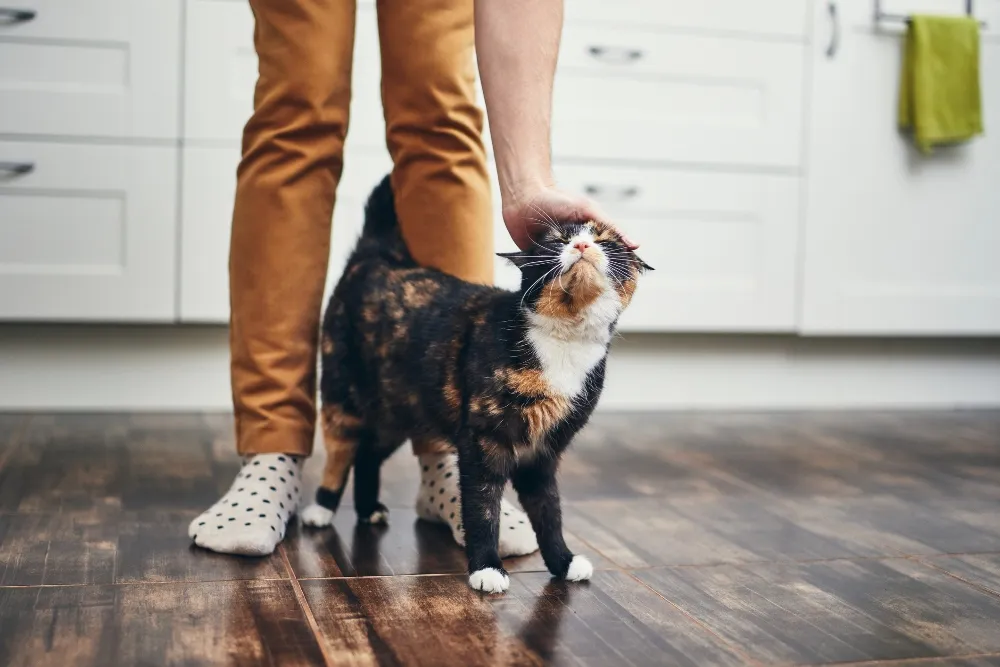Key Takeaways
- Partner with your vet and prioritize preventive care.
- Focus on good nutrition and exercise for your pet.
- Understand the unique grooming and dental care needs of your pet’s breed.
- Make sure your pet is socialized early to prevent behavioral problems.
- Consider pet insurance to help pay for costly future medical bills.
Table of Contents
The purrs… the goofy grins… the snuggles. It doesn’t get much better than life with a cat or dog — until something goes wrong. Thankfully, owners are in the driver’s seat when it comes to their pet’s well-being. Let’s take a look at five smart choices that you can make to support your pet’s health and happiness.
1. Partner with your veterinarian
You know your pet best! When you combine your expertise with your veterinarian’s medical knowledge, your dog or cat can only benefit. Most pet parents quickly reach out to their veterinarian when their fur friend is sick or injured, but don’t overlook the importance of preventive care.
Young puppies and kittens generally need to see the vet every three to four weeks for a total of three to four visits to receive their initial set of vaccines and boosters, dewormings, and to monitor their growth and development. Adults in the prime of their lives usually require annual wellness visits, but once they reach their senior years, twice-yearly checkups are beneficial so that problems associated with old age can be identified and treated as quickly as possible. Wellness visits can include:

- Physical examination
- Vaccinations or vaccination titers
- Testing for heartworms, feline leukemia virus, and feline immunodeficiency virus
- Discussing appropriate heartworm, flea, and tick prevention
- Fecal exams and/or deworming
- Helping with spay and neuter decisions
- Microchipping
- Routine lab tests to check organ function, blood cell counts, and more
- Dental cleanings
- Providing pet care advice and answering any questions you might have
2. Prioritize nutrition and exercise
Combining good nutrition with appropriate exercise is arguably the most important thing you can do every day to keep your pet healthy and happy. Feed a nutritionally complete and balanced, age-appropriate food. Commercial diets should be labeled with an AAFCO (Association of American Feed Control Officials) statement of nutritional adequacy. Work with a veterinary nutritionist if you elect to feed a home-prepared diet. Most recipes available online or in books do not provide balanced nutrition for dogs and cats.
But don’t feed too much! Well over half of dogs and cats are overweight, which puts pets at increased risk for many serious diseases. Research has shown that pets who are slim live longer and healthier lives.
Pets also need to exercise every day to keep their bodies strong and to prevent boredom. Spend some quality time with your cat or dog at least once a day. Take your dog for a walk and find some other activities that you and your pet can enjoy together. Watch for signs of potential health problems, like limping or tiring easily.
3. Grooming and dental care
Specific breeds have different needs when it comes to grooming—think a Maltese versus a Doberman or a Persian versus a Siamese, but some basic recommendations do still apply:

- Most pets have some degree of dental disease by the time they are three years old. Brush your pet’s teeth daily with a soft-bristle toothbrush and pet-friendly toothpaste. If this isn’t possible, consider using alternative dental care products that have been approved by the Veterinary Oral Health Council.
- Brush your pet’s coat at least weekly to remove shed fur. Long-haired pets may need more frequent brushing to prevent tangles and mats. Most pets love to be brushed gently, so this is an excellent bonding opportunity and a good chance to check for fleas, ticks, skin problems, and new lumps or bumps.
- Healthy pets may only need to be bathed when they get dirty or start to smell, but more frequent baths can be an important part of managing allergies or treating skin problems.
- Look in your pet’s ears weekly for excessive dirt and wax and clean them if needed. Seek medical attention if you see signs of infection like redness or discharge.
- Check your pet’s nails monthly and trim them when they’re too long.
- Pets with long hair or other special grooming needs often benefit from seeing a professional groomer every six to eight weeks.
4. Behavior
Socialization is the best way to prevent the behavioral problems that often lead owners to relinquish dogs and cats to animal shelters. Expose your pet to as many new, positive situations as possible, particularly when they are young. Also, make sure your pet gets enough physical and mental exercise to prevent them from acting out due to pent-up energy and boredom.
Training is important too. Teaching your pet (yes, cats also!) tricks and basic commands like “come,” “stay,” and “drop it” serves multiple purposes:
- Keeping pets safe in potentially dangerous situations
- Providing much needed mental stimulation and physical exercise
- Improved bonds between pets and their people
5. Consider pet insurance
Despite our best efforts, most pets do eventually develop illnesses or injuries that require expensive veterinary treatments. Maybe you have the ability to pay for whatever your pet might need right now, but if not, it’s time to consider pet insurance. Policies are available to fit most budgets, and the peace of mind that comes with knowing you can provide the care your pet needs is truly priceless.







